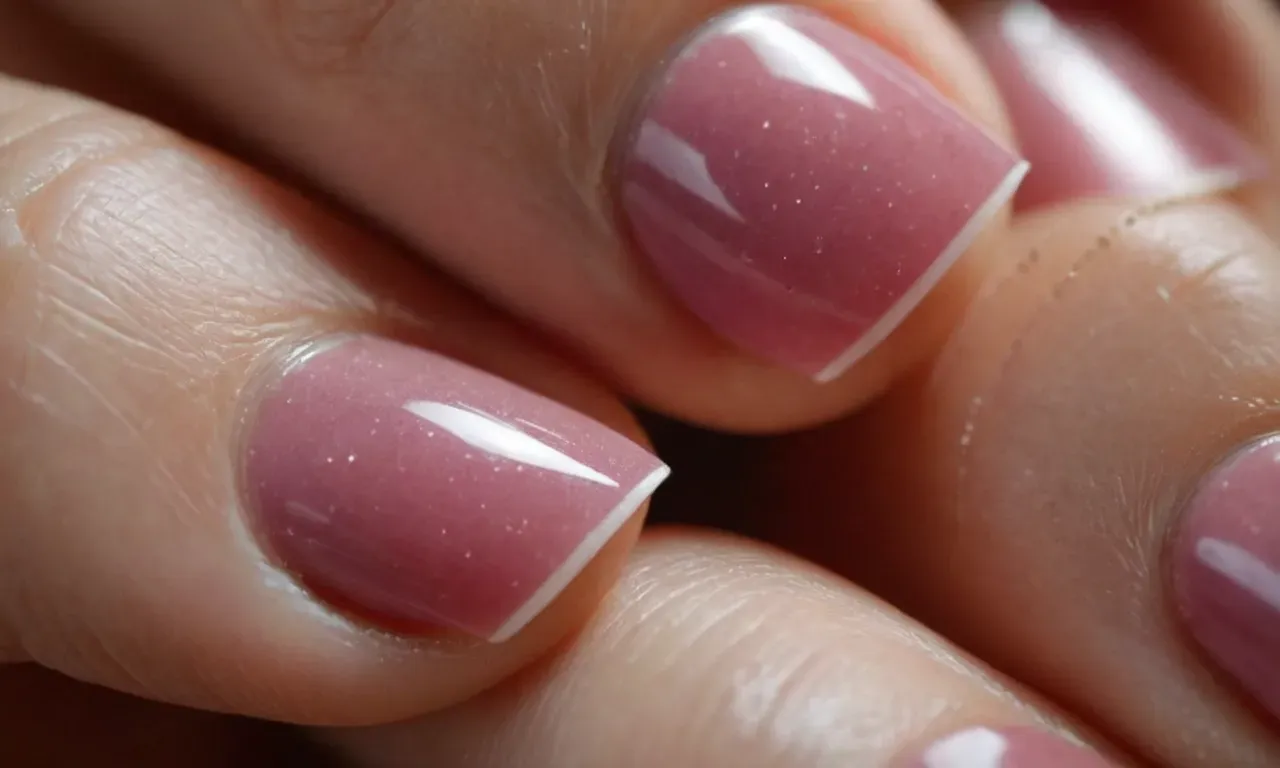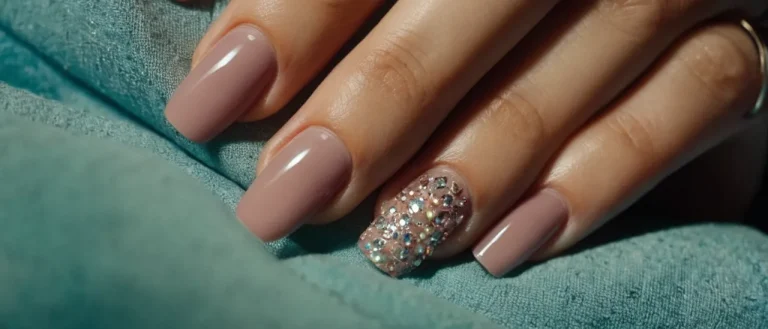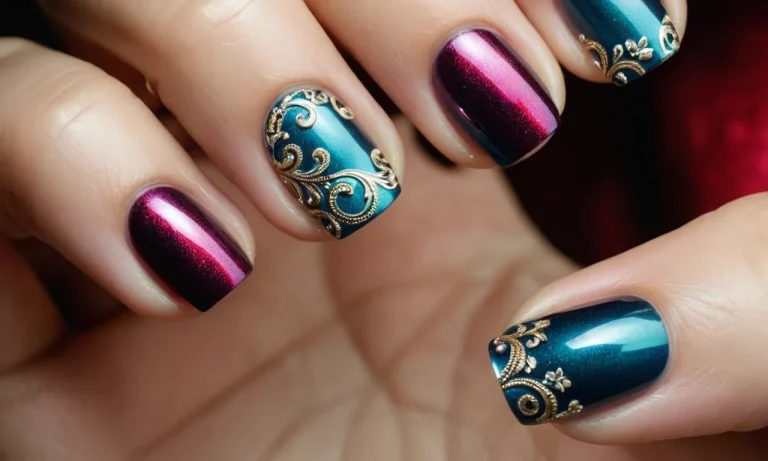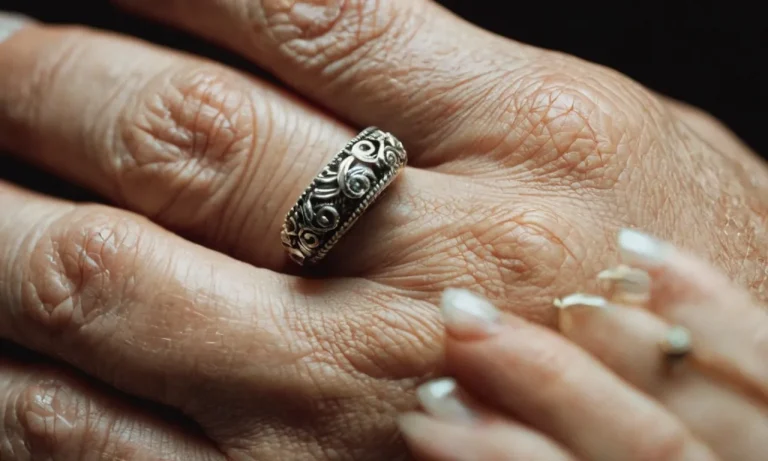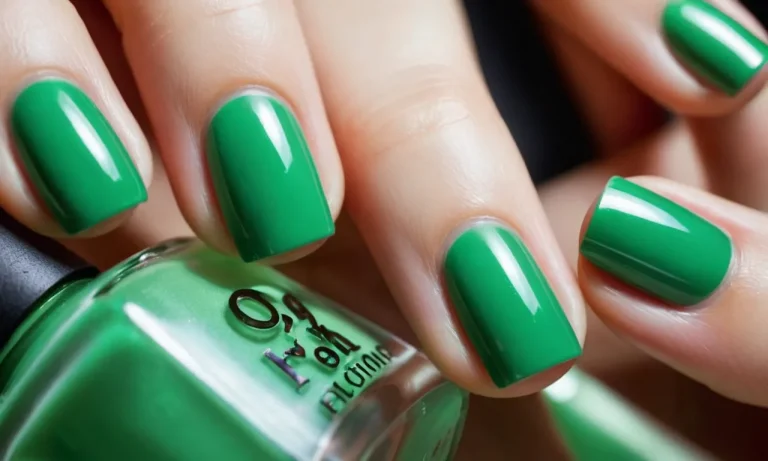How To Flatten Pincer Nails For Good
If you have pincer nails, you know how unsightly and painful they can be. Luckily, there are several effective methods to help flatten and correct pincer nails at home.
Here’s a quick answer: To flatten pincer nails, you can file them down, apply moisturizers, use separators or dental floss under the nail, try silicone nail correctors, or get prescription medication. Keep reading for more details on these methods.
In this comprehensive guide, we’ll discuss what causes pincer nails, signs to look out for, and provide actionable tips on how to flatten them through filing, moisturizing, separating, silicone correctors, and medications.
With the right techniques and some patience, you can get rid of pincer nails for good.
What Are Pincer Nails?
Description and Causes
Pincer nails, also known as trumpet nail deformity, are a condition where the nails become thickened and curve inward towards each other, resembling the claws of a pincer or crab (American Academy of Dermatology). This inward curvature creates a distortion in the shape of the nail.
Pincer nails tend to affect both thumbnails, but can also occur in other fingers and toes.
There are several potential causes of pincer nails:
- Heredity – There is often a genetic component. The condition may run in families.
- Aging – More common in older adults as nails tend to thicken over time.
- Trauma – Injury to the nail or repetitive manipulation can distort nail growth.
- Poor footwear – Shoes that are too tight can put pressure on nails and alter their growth.
- Underlying illness – Some systemic diseases are associated with pincer nails, like psoriasis and osteoarthritis.
The thickened portion of the nail grows inward, while the tips remain flat. As the condition progresses, the nail plate can digging painfully into the surrounding skin. The constant pressure leads to inflammation and infection in severe cases.
Pincer nails tend to get worse over time without treatment.
Signs and Symptoms
The main sign of pincer nails is the distinctive claw-like curvature of the nails. Other signs and symptoms include:
- Thickened nails that are difficult to cut and file
- Ingrown nail edges pressing into skin
- Redness, swelling and pain around the nails
- Discharge of fluid if infection occurs
- Difficulty with activities due to nail distortion
The degree of the curvature will vary. In mild cases, the nail may only be slightly distorted. In severe cases, the nails can dig painfully into the skin and cause recurrent infections. The surrounding skin may thicken and overgrow the nails.
Most people with pincer nails experience them in both thumbnails. The condition tends to gradually worsen over time without proper care.
How to Flatten Pincer Nails
Pincer nails, also known as trumpet nails, are nails that are overly curved and dig painfully into the skin. Thankfully, there are several methods you can try at home to help straighten pincer nails and relieve discomfort.
File Them Down
Filing pincer nails with an emery board or nail file is one of the quickest and easiest ways to thin them out and flatten the edge. Focus filing efforts on the thicker sides that are pressing into your skin. File them little by little each day until the curvature improves and irritation subsides.
This gentle filing should not damage the nail bed.
Apply Moisturizer
Keeping nails and surrounding skin moisturized can create a smoother surface for the nail to adhere to so it has less opportunity to curve under or grow into the skin. Apply a rich hand cream several times per day, massaging it into the nail beds and cuticles.
Petroleum jelly also creates a protective barrier reducing friction against the skin.
Use Separators
Special orthodontic rubber bands or foam separators worn between the toes can help reverse pincer nail curvature and realign nail growth. They gently press against the sides of the nails to flatten them out.
Separators may produce results in a few weeks when worn daily for most of the day and night according to your comfort level.
Try Silicone Nail Correctors
Silicone devices like Onyfix slip over the end of the nail and lift it off of the skin, protecting the skin from getting pierced while straightening as the nail grows out. In a clinical study, over 90% of patients saw pincer nail improvement in 3 months with silicone correctors according to Onyfix’s website.
They must be worn consistently to work.
Get Prescription Medication
For severe cases unresponsive to home treatments, corticosteroid injections or topical prescriptions may help reduce inflammation and curvature. These are administered under medical supervision to avoid potential side effects.
Surgery like partial nail removal is a last resort for extremely problematic pincer nails causing infection or limiting function.
Prevention Tips
Wear Properly Fitted Shoes
One of the most common causes of pincer nails is wearing shoes that are too tight or narrow for your feet. Shoes that squeeze the toes together can put pressure on nails and distort their shape over time. When shopping for shoes, make sure to get properly fitted pairs that don’t cramp your toes.
There should be enough room to wiggle them freely without hitting the ends. Brands like Vionic offer a wide toe box design to prevent compression issues.
You should also avoid styles like high heels and pointed toe flats or pumps that can cram toes together. Opt for shoes with more space like sneakers, loafers, boots with a rounded shape, etc. Give your feet a break from constricting footwear whenever possible by going barefoot at home to relax tissues.
Trim Nails Straight Across
Trimming your toenails too short or rounded at the edges can encourage the development of ingrown sections that cross over other digits. Use sharp nail clippers to cut them straight across instead of rounding off corners.
Leave a small amount of white showing at the tip for a safer length. File edges gently with an emery board if needed so they don’t become jagged or sharp. This helps prevent one nail from overlapping another unnaturally. You can find proper nail trimming tutorials on podiatry sites like APMA.org.
Moisturize Frequently
Very dry, brittle nails and cuticles can also contribute to distortion in shape. Apply moisturizing oils, lotions, or creams regularly to keep them supple and flexible instead of hard.
Consider an intensive overnight cream treatment 1-2 times per week. Some ingredients to look for include:
- Coconut oil
- Vitamin E
- Glycerin
- Shea butter
- Antioxidants like vitamin C
You can also use cuticle remover liquid followed by nourishing balm or gel around the nail edges. This keeps them from becoming overgrown or rigid. Getting monthly professional manicures helps maintain healthy nails too.
When to See a Doctor
Pincer nails can cause significant pain, inflammation, and infection. While some cases may resolve on their own, it’s important to see a doctor if your symptoms persist or worsen. Here are some key times you should schedule an appointment:
- Your cuticle area is red, swollen, and painful
- Pus or foul-smelling discharge is present
- You have a fever along with nail pain or swelling
- Your nail feels loose or seems to be separating from the nail bed
- Over-the-counter medications and home remedies haven’t helped
- The deformity is getting worse or impacting your daily activities
- You have diabetes or circulation issues that affect wound healing
Seeing a podiatrist promptly can prevent complications like permanent nail loss or bone infection. They have specialized training in diagnosing and treating nail conditions. Treatment options may include antibiotics, minor surgery to remove part of the nail, splints and padding to protect the area, or corrective devices.
In severe cases, the podiatrist may recommend complete surgical nail removal (matricectomy). This is often a last resort when other conservative treatments have failed. The surgery removes the entire nail matrix to prevent regrowth.
Recovery involves keeping the area bandaged and allowing the nail bed to fully heal over several weeks.
While matricectomy causes permanent nail loss, it can greatly minimize pain and complications when pincer nails are too problematic. Your podiatrist can advise on the pros and cons of this surgery compared to other options. Some key reasons it may be recommended include:
- Repeated nail infections
- Chronic inflammation and swelling
- Bone damage or infection
- Impaired mobility or function
- Persistent pain unresponsive to other treatment
If you allow pincer nails to progress untreated, you risk developing cellulitis, osteomyelitis, or gangrene. These require hospitalization for IV antibiotics and surgery. So don’t delay in seeing a podiatrist if basic home care isn’t helping.
Acting quickly can help restore health and function to your toes.
Conclusion
Pincer nails can happen to anyone but are manageable with the right techniques. Focus on keeping nails filed smooth, using moisturizers and separators, and correcting their shape over time. Most cases can be treated at home through diligent care.
However, see a doctor if you have diabetes, poor circulation, or if home treatments aren’t working after several months. With patience and perseverance, you can outsmart pincer nails and get your healthy, flat nails back.

